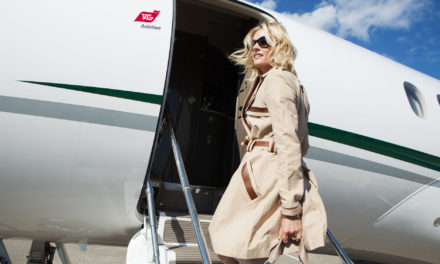We are used, through the pages of this magazine, to browse articles on players in the business aviation sector. The image is often linked to operators and their flawless service, brand new business terminals around the world and the latest models from a manufacturer with the latest technology and comfort. So in attacking this article, I wondered how to make sure that the readership does not turn the page right away by seeing this topic related to regulation.
Difficult indeed to find a less exciting topic than that of regulation. Whether in the certification of a new model, in the extension of the rating of an MRO or in the growth of a European operator, it is present everywhere. However, one thing is clear: regulation, when it is discussed with business aviation decision makers, is not a priority. It is at best a subject of discussion and often a reason for inconvenience, or even a brake on the development for the people questioned.
On the strength of this observation, regulations are evolving into a paradox. Too often neglected and truly unappreciated by professionals, it remains a necessary evil and when well apprehended can be a real asset to companies.
From the OACI to the AESA
But in the end, what is regulation? The regulation is, in a broad sense, a set of indications, laws, prescriptions, rules and regulations, and other legal texts governing a social activity. And in our case, it concerns aviation. Aviation regulations came into being after the Second World War, including the creation of the International Civil Aviation Organization at the Chicago Convention in 1944. The SARPs (Standard and Recommended Practices) of the ICAO have shaped air transport, and are the basis of the various regulations that the national authorities have made us follow and are still enforcing.
Today the European national authorities have given way to EASA, the European Aviation Safety Agency, set up in 2003. Since its creation, this entity has gradually gained control of all aspects of air transport: aircraft and equipment, maintenance and airworthiness management, air operations, crew training, air traffic control and more recently airport management. To manage this package, the EASA has issued Implementing Rules to regulate business aviation in the same way as commercial aviation. These affect aeronautical operators, as well as flight training centers, as well as owners of private aircraft. These rules of application or Implementing Rules are known by their code name given by the agency:
-IR 965/2012, better known as IR-OPS or AIROPS, implemented since 2014. This rule is a flagship regulation, since its progressive application has revolutionized commercial air transport (CAT), but also private (NCC / NCO) and aerial work (SPO).
-IR 13214/2014, another Flagship Regulation and formerly 2042/2003, dealing with continuing airworthiness, and its appendices are the famous Part M (Appendix I), Part 145 (Appendix II).
-IR 1178/2011, called AIRCREW. This regulation implements all rules relating to pilots and hostesses.
CAMO….
But beyond the references cited above, it is indeed Regulation 1321/2014 (2042/2003) and in particular Appendix I Part M which firstly had a notorious impact on business aviation in Europe. This paragraph has made possible, in particular through its Subpart G, the creation of CAMO (Continuing Airworthiness Management Organization); these companies that provide airworthiness management for business jet owners. It is also the Part M, with its sub-part I, which allows operators to internally manage the validity of aircraft certificates of airworthiness. And this, without depending on the availability or the goodwill of the inspectors of the competent authority. Another interesting point, the paragraph Part M.A.903, makes it possible to simplify the steps of transfer of an airplane within the European Union, thus avoiding the tedious actions previously imposed by the national authorities. The list is still long, and in a future article we will come back in more detail on how to deal constructively with Regulation 1321/2014.
…And Part NCC
In addition to the Part M regulation, reference IR 965/2012 is the second most important regulation in business aviation since it concerns AIROPS.
And in particular the rule of August 25, 2016 evoking the implementation of the NCC Part. This part introduced a notion of structuring the private operation of a complex aircraft (multi engine, more than 5.7t, 19 pax). So today they are real operators who manage their private planes, with an operations manual, a management system, a more precise training framework for pilots and a responsible officer. At the same time, a minimum list of reference equipment (Minimum Equipment List) must be approved and specific approvals obtained and an NCC declaration issued. Now business jet operators offer owners of private aircraft not wishing to be structured the opportunity to host them for a so-called “NCC” operation.
As you’ve come to realize, the idea of this article is not to list all the regulatory points, but to show that these regulations can be taken as structuring elements for business aviation players. The fact is that they have not only brought constraints, and in addition to their stated goal of security, they allow the establishment of a European standard to facilitate, for example the transversal development of operators in the different countries of the European Union.
As a consultant, working every day with these regulations to provide solutions to customers, it is important not to suffer but to use these “laws” for the benefit of professionals. Nevertheless, it takes time to apprehend, anticipate and explain. This is the challenge of our profession as an expert consultant.
Time To Fly
29 avenue de l’Europe
93350 Le Bourget
+33 6 16 22 48 89
info@timetofly.eu
timetofly.fr









